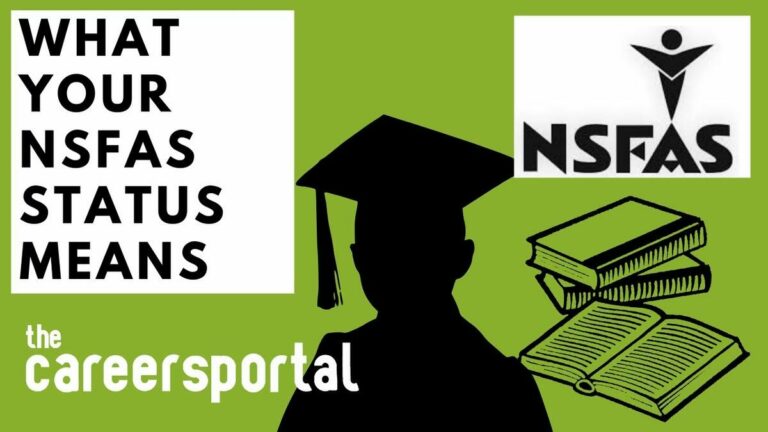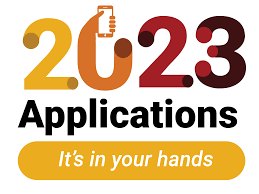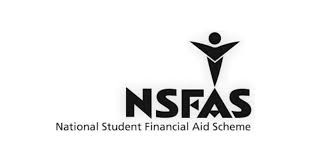NSFAS Application 2026 – A Detailed Guide
The National Student Financial Aid Scheme (NSFAS) plays a critical role in making higher education more accessible to South African students, especially those from financially disadvantaged backgrounds. Every year, thousands of students rely on NSFAS funding to pay for tuition, accommodation, transportation, and other essential expenses. For 2026, the NSFAS application process will be open soon, and it’s crucial to understand the steps, requirements, and deadlines involved to ensure that your application is successful.
This article provides a comprehensive guide to applying for NSFAS funding in 2026, including eligibility criteria, how to apply, and essential tips to help you along the way.
What is NSFAS?
The National Student Financial Aid Scheme (NSFAS) is a South African government initiative designed to help students from low-income households access higher education at public universities and TVET colleges. NSFAS offers funding to cover the following costs:
- Tuition fees (including registration and examination fees)
- Accommodation costs (on or off-campus)
- Transport allowance (if applicable)
- Meal and personal allowances
- Study materials (e.g., textbooks, laptops, etc.)
NSFAS funding is awarded based on a student’s financial need, and eligibility is typically determined by family income.
Who is Eligible for NSFAS Funding in 2026?
To be eligible for NSFAS funding for 2026, you must meet the following criteria:
- South African Citizen: You must be a South African citizen to qualify for NSFAS funding.
- Financial Need: NSFAS supports students from households with a combined annual income of R350,000 or less.
- Admission to a Public Institution: You must have been admitted to a South African public university or TVET college for the 2026 academic year. Proof of admission will be required.
- First-time Students: First-time applicants for NSFAS funding must have completed their matric or an equivalent secondary school qualification.
- Returning Students: If you’re a returning student, you need to show that you have made satisfactory academic progress and met the institution’s academic requirements.
Special Consideration for Students with Disabilities: If you have a disability, NSFAS offers additional support to cater for your specific needs, such as funding for assistive devices or support services.
How to Apply for NSFAS Funding in 2026
The NSFAS application process for 2026 will be fully online. Follow these steps to apply:
Step 1: Gather Required Documents
Before you start your application, ensure you have the following documents:
- South African Identity Document (ID) or Birth Certificate (if you’re under 18).
- Proof of income (for you and your parents/guardian). This could include:
- Pay slips
- A bank statement or letter from the bank
- Affidavit if your parents/guardians are unemployed
- Matric Certificate (if you are a first-time applicant) or latest academic transcript (if you are a returning student).
- Proof of residence (e.g., a utility bill, affidavit).
- Disability documentation (if applicable).
Step 2: Create a MyNSFAS Account
- Visit the official NSFAS website at www.nsfas.org.za.
- Click on the MyNSFAS link to create a new account.
- Enter your personal details such as your name, ID number, email, and contact number.
- Confirm your details via email or SMS.
Step 3: Complete the Online Application Form
Once your MyNSFAS account is set up, log in and follow these steps:
- Fill out the NSFAS application form: Provide all required information, including:
- Your personal information
- Details of the public institution where you’ve been accepted (university or TVET college)
- Your financial details, including the income of your parents/guardians
- Details about your previous education (e.g., matric or latest academic transcript)
- Upload the required documents: Make sure all your supporting documents are uploaded correctly in the appropriate sections. Ensure that the documents are clear and legible.
- Review your application: Double-check all the details you’ve entered and make sure that all required documents are uploaded.
Step 4: Submit Your Application
Once you’ve completed the form and uploaded your documents, click Submit. After submission, you will receive a reference number. This number allows you to track the status of your application.
NSFAS Application Deadlines for 2026
The NSFAS application for 2026 will open in September 2024 and close on 30 November 2024. It’s important to submit your application before the deadline as no late submissions will be accepted. Be sure to submit your application early to avoid any last-minute issues with the website or technical problems.
How to Track Your NSFAS Application Status
After submitting your NSFAS application, you can track the progress of your application through the MyNSFAS portal. Here’s how:
- Log in to your MyNSFAS account using your username and password.
- Click on “Track Application” to see the status of your application. This will show whether your application has been successfully processed, whether any documents are missing, or whether NSFAS needs further information.
- You will receive updates on your application status via email or SMS.
What Happens After You Apply?
Once NSFAS has received your application, they will process it and evaluate your eligibility. You will be notified of the outcome of your application. If your application is approved, you will be given an award letter specifying how much funding you’ve been granted.
What to Do If Your NSFAS Application is Rejected
If your application is rejected, don’t worry. You have the right to appeal the decision. Here’s what to do:
- Review the Reason for Rejection: Check your MyNSFAS account for details on why your application was rejected.
- Submit an Appeal: If you believe the rejection was a mistake, you can appeal the decision by submitting the necessary documents or making corrections.
- Appeal Deadline: NSFAS provides a specific period during which you can submit an appeal, so make sure to do so before the deadline.
Common NSFAS Application Issues and How to Solve Them
Here are some common issues that applicants may face when applying for NSFAS funding, and how to resolve them:
- My High School Doesn’t Appear: If your high school is not listed in the application form, check with your school’s administration to confirm that they are registered with NSFAS. You can also select “Other” and manually input the school’s details.
- Missing or Incorrect Documents: Make sure that all your documents are uploaded correctly and in the required format (PDF, JPEG, etc.). Check for any errors in your documents before submission.
- Application Not Submitting: If the website is down or not accepting your application, wait a few minutes or hours and try again. Alternatively, use a different browser or device.
The NSFAS 2026 application process is an essential step for many South African students who need financial assistance to pursue higher education. By following the steps outlined in this guide—gathering your documents, completing the application form, and submitting it before the deadline—you can improve your chances of securing the funding you need.
Remember, NSFAS funding can be a life-changing opportunity, covering everything from tuition to accommodation and study materials. So, take your time to ensure your application is accurate and complete.
For more information, updates, and to apply, visit the official NSFAS website: www.nsfas.org.za.
Good luck with your NSFAS application for 2026, and we hope you receive the funding you need to further your studies!



